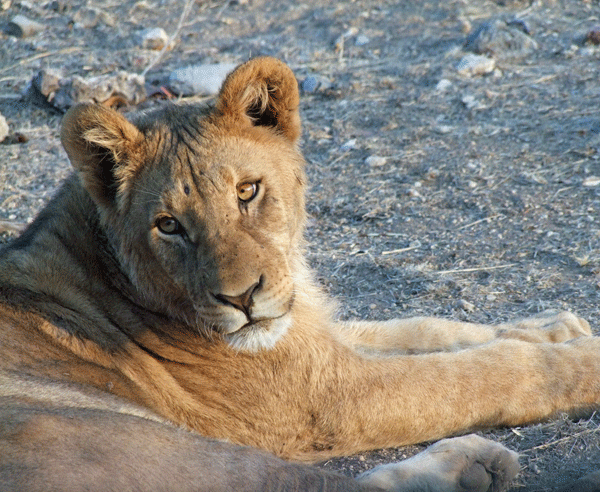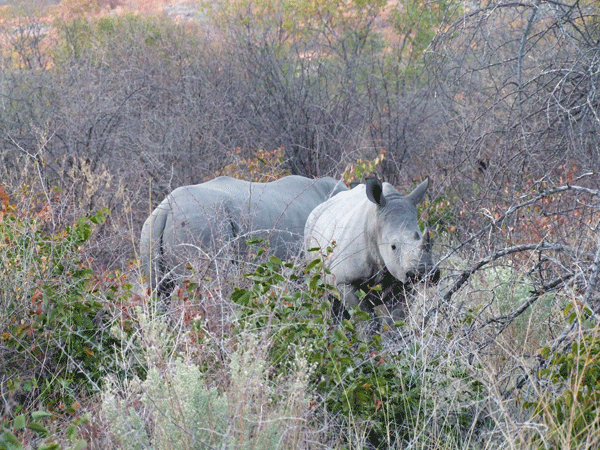Sharing the border fence with one of the Africa’s largest game parks, Ongava Private Game Reserve has got its positioning spot-on for some of the best game viewing in Namibia. Neighbouring the Etosha National Park means that guests at any one of Ongava’s exceptional safari lodges are offered the best of both National Park pride and private reserve speciality. Dense, green, mopane woodlands enclose the sandy pathways in Ongava, while the wide, flat, acacia plains characterise south-western Etosha, providing delightfully contrasting habitats within such close range. The slow, crackling gravel under my tyres and the rising dust appearing through my rear window announced my arrival in Namibia’s safari territory. Rolling my windows right down, turning off the radio and absorbing the 28 degree winter heat, I drove the quiet road toward Ongava Tented Camp.
Having been on the alert for warthogs and baboons, while narrowly missing guinea fowls on the road from Windhoek, my eyes had sharpened to any roadside movement. Within the first few kilometres upon entering the reserve I had stopped to watch zebras and waterbuck, foolishly occupying precious camera memory with these unperturbed animals. Slightly shyer oryx and kudu also entertained my snapper-happy camera hand while I rolled in the direction of my accommodation, way below the speed limit. My introduction to Ongava was a perfect sample of what was to be my experience there; private and personal with practised attention to detail that ensured all guests were as comfortable as possible.
Ongava Tented Camp is a borderless camp, meaning that aside from some electrified wiring lining the main deck, there are no physical boundaries separating its guests from the wild. During the day, there is no danger in walking from one’s luxury tent to the wonderfully arranged common area, but after sunset, guests are escorted to and from dinner by an armed guide to ensure their safety. The tented units are near enough together to maintain a level of intimacy and to provide each private deck a view of the waterhole that was rarely unoccupied. My initial trip to my tent was accompanied by a number of basking dassies, tiny tree squirrels, excitable young baboons and wary waterbuck; it was safe to say that my first hour spent in the reserve had been an uninterrupted display of safari stardom.
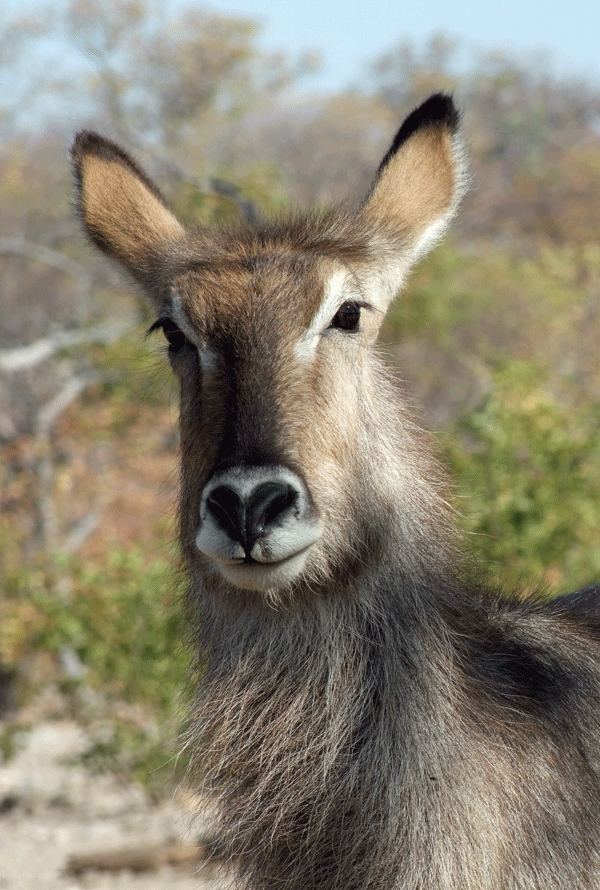
Warm and engaging hosting couple, Heinrich and Elizabeth, were brimming with knowledge and interest about the area and their passion for their workplace was evident. The guide, Bono, was smartly khaki-ed, as was Rio, who was the rifled ranger showing guests to their rooms. Belinda and Patience were friendly and professional, announcing our delicious dinner menu in both English and Damara, which is a language of north-western Namibia with numerous clicks that link it most closely to the original khoi-khoi dialect.
Afternoon game drive kicked off at 3.30, which, in Namibia’s dry mid-winter season, required nothing more than short sleeves and sunglasses. Needless to say, the temperature dropped as soon as the sky bade a colourful goodbye to the sun and a definite chill stung my cheeks and ears as we trundled on in our open-topped Land Rover. Bono took us on a fairly speedy (for safari standards) trip through the characterful Ongava reserve and after slowing down every so often to examine the spoor-littered sandy pathway, we emerged in a clearing that surrounded a small, pumped waterhole. Here, we silenced the vehicle, readied our cameras and breathed in awe, for Bono had led us right to the rest camp of Ongava’s biggest pride of lions. Initially we counted 6 younguns, roughly 8 months old, lazily soaking up the last of the sunlight, but Bono’s expert instinct led us just beyond the leafy mopane trees to where the rest of the family was noisily awakening for the night’s activities. Two males, some Moms and an entire nursery of little ones all reacting to the presence of our vehicle with curiosity. After a long visit, we left the lions and returned home with full memory cards and hungry tummies.
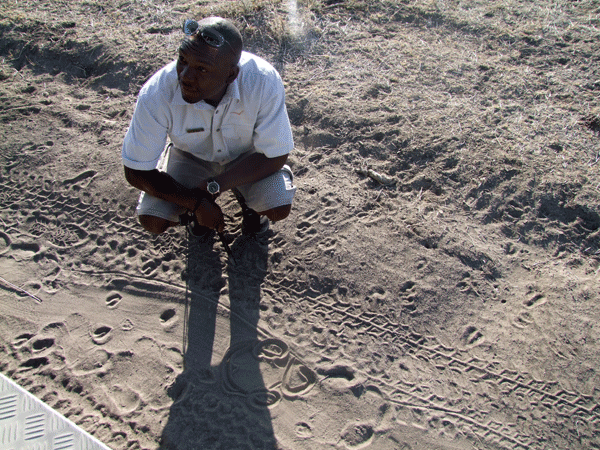
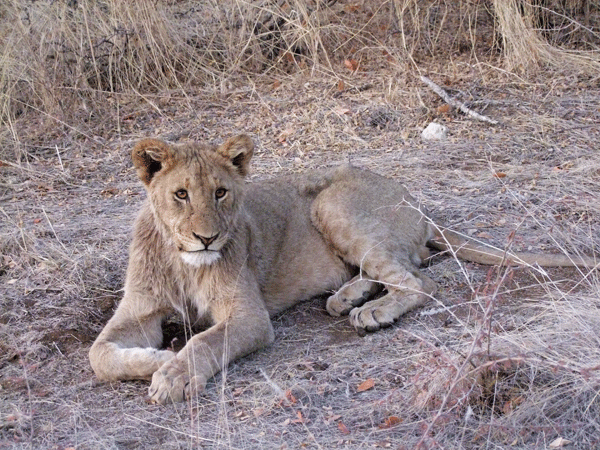
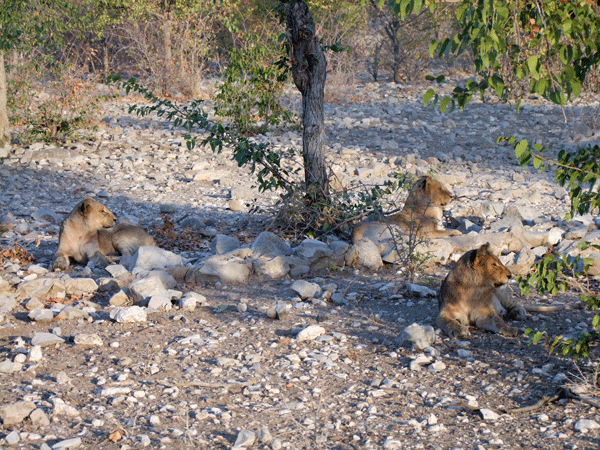
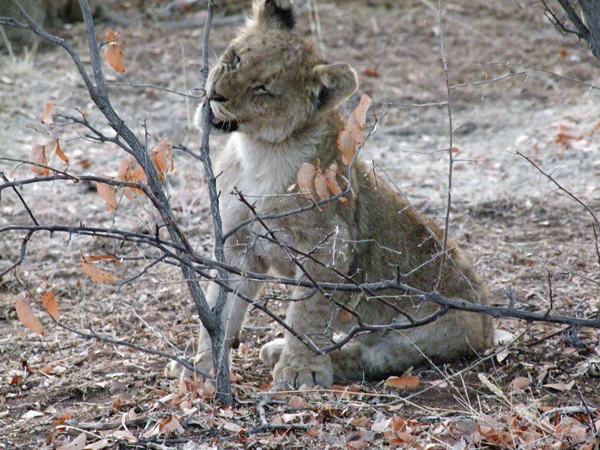
A superb selection of red and white wines coloured our glasses and kept the merry conversation flowing as we made our way through three courses of home cooked scrumptiousness under the warmth of gas lanterns. The illuminated waterhole was visited by a porcupine, which was a special sighting we appreciated from the comfort of the dinner table before the quilled creature retreated into the darkness. A brown hyena – an exciting first – was spotted by Heinrich’s keen eye a few metres off the footpath and we were able to stand and watch as the ‘camp nuisance’ chewed his way through the water supply pipe before getting comfortable and taking a long drink. Once I thought all the excitement was over and I had been escorted to bed, there was a knock on the door as Rio came to deliver the latest wildlife news. Two white rhino had taken advantage of the stillness that succeeded our jovial dinnertime and there they stood, side by side, drinking at the waterhole not 10 metres from my tent. It was a majestic sight – I did not even turn away to find my camera.
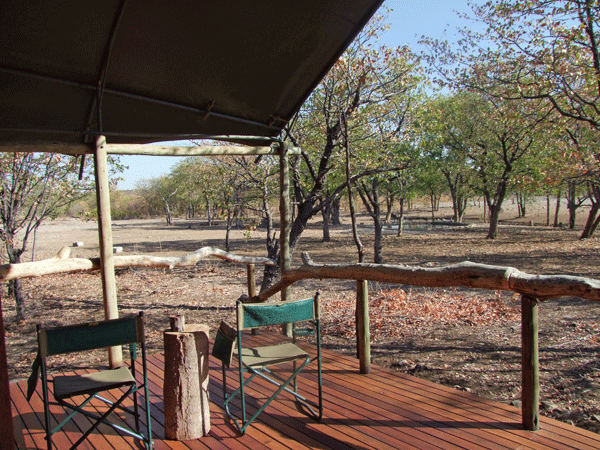

I was sorry to leave Ongava Tented Camp after just one night, but I was excited to see what their neighbour, Andersson’s Camp, had to offer. A short drive through the reserve took me to my new home, which was abuzz with a number of new arrivals. A lot more space, more casual and child-friendly, Andersson’s Camp presented the opportunity to socialise at will, but there was ample space for those who wanted to spend some quiet time overlooking the waterhole. I was shown to my canvas tent that was rustically decorated with wood and iron, a four poster bed draped elegantly with mosquito netting, and a shower that requires one to stand in a sunken tin tub. I particularly enjoyed the piping hot water and the electric plug points in my Andersson’s room, but I missed the water-saving bucket technique that we were encouraged to use at Ongava Tented Camp.
A rewarding aspect of spending one’s safari holiday in a private reserve is that we are offered the opportunity to embark on a night drive and to accompany an armed guide on a nature walk during the day. I opted for both in the short space of time I was at Andersson’s and my charmingly expressive guide, Shilongo, was only too happy to oblige. Shilongo speaks a mix of languages, primarily Ovambo, but English is the newest and least practised of the lot. I grew accustomed to his lingo and appreciated his descriptive approach. Sometimes, he unexpectedly ended his sentences with a good laugh and I realised I hadn’t fully understood what he had said!
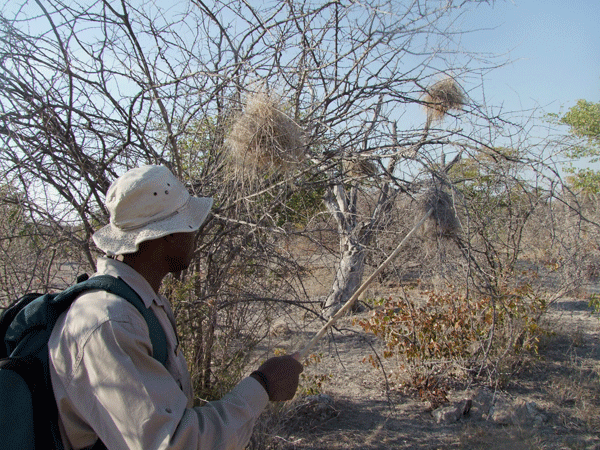
Similarly to Ongava Tented Camp, Andersson’s offers guests the pleasurably lazy option of game-viewing from the deck. Two waterholes (and an in-the-making animal hide) attract a wide variety of game, many of whom are not shy to frolic and fuss as if for our pure enjoyment. Warthogs trotted around, tails standing to attention; blue wildebeest ambled in alongside their striking comrades, the zebras; oryx, kudu and eland also made sneaky appearances when they felt the coast was clear; and giraffes plodded around picking at the high reaching acacias. Breakfast was a varietal buffet, accompanied by the presence of the boldly coloured Crimson-breasted shrike and the chirruping bulbuls.
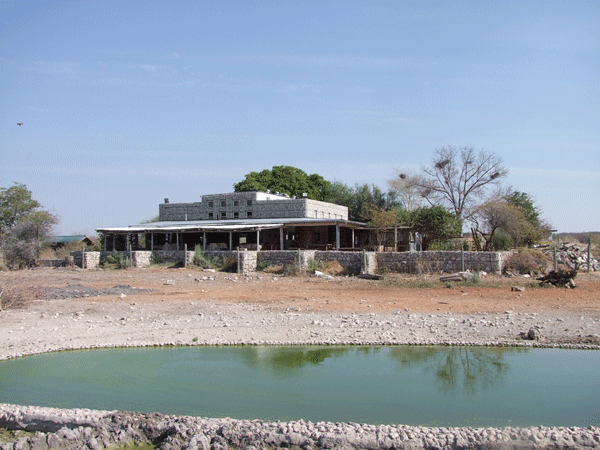
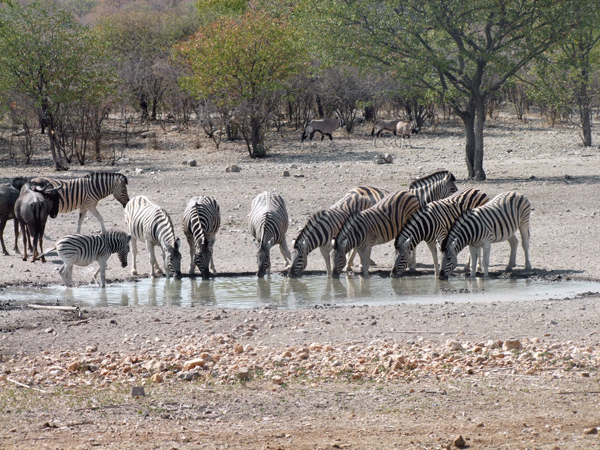
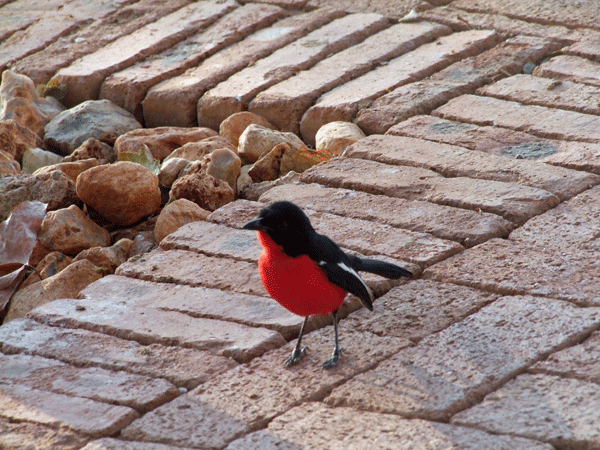
When it was finally time to depart for the next destination, I had an inkling that the best part of my safari was over. I had spent quality time with a pride of lions and couple of white rhinos – two species our continent faces losing to extinction if we are not careful. I felt lucky that I had been taught by such knowledgeable, passionate and ethical guides who are invested in the wild future of the Ongava and of Namibia. A combination of local cultures, flavours, languages and laughter; my short-lived stays at these two camps enhanced my experience as a whole and I can confidently settle Ongava’s position as a must-be-there safari destination.
